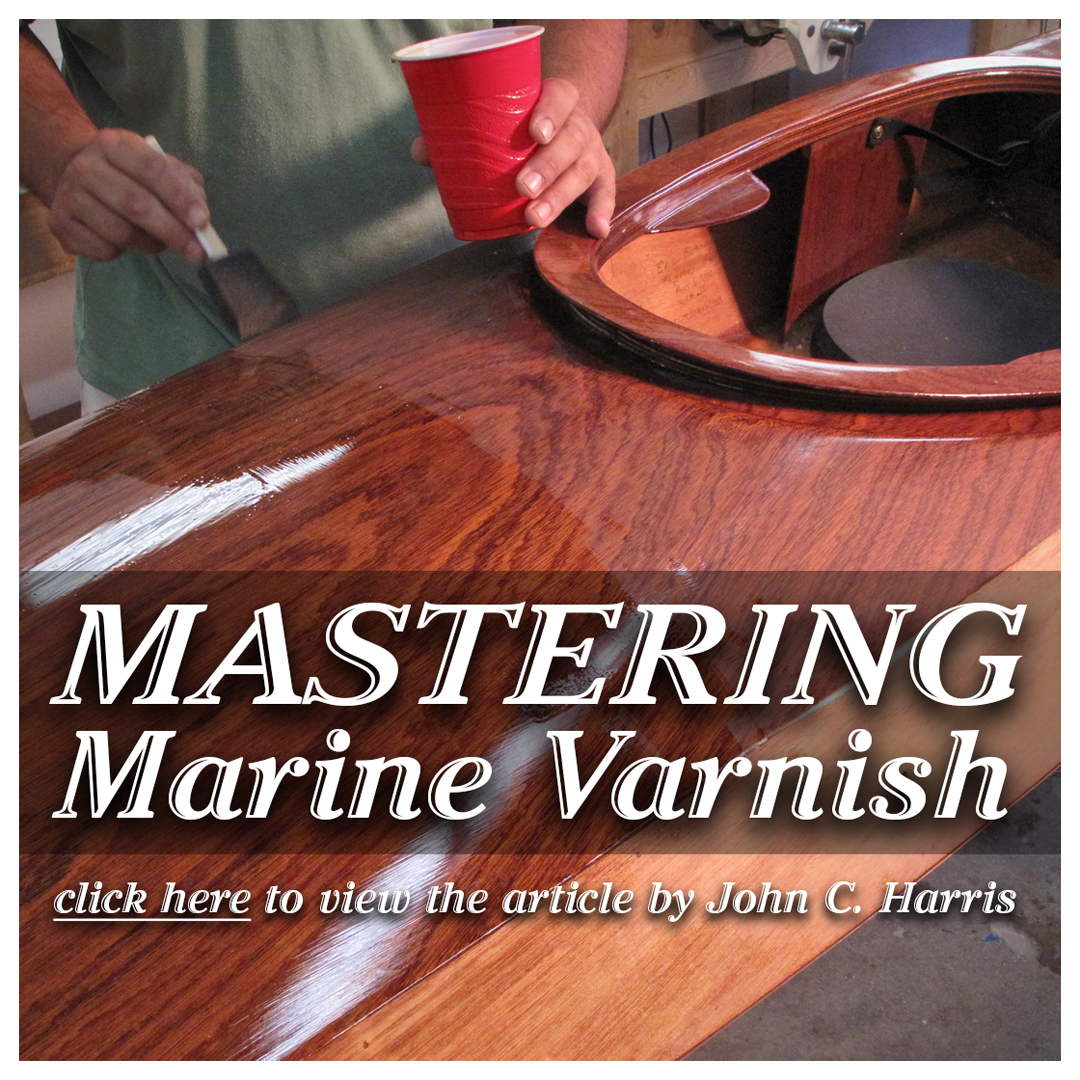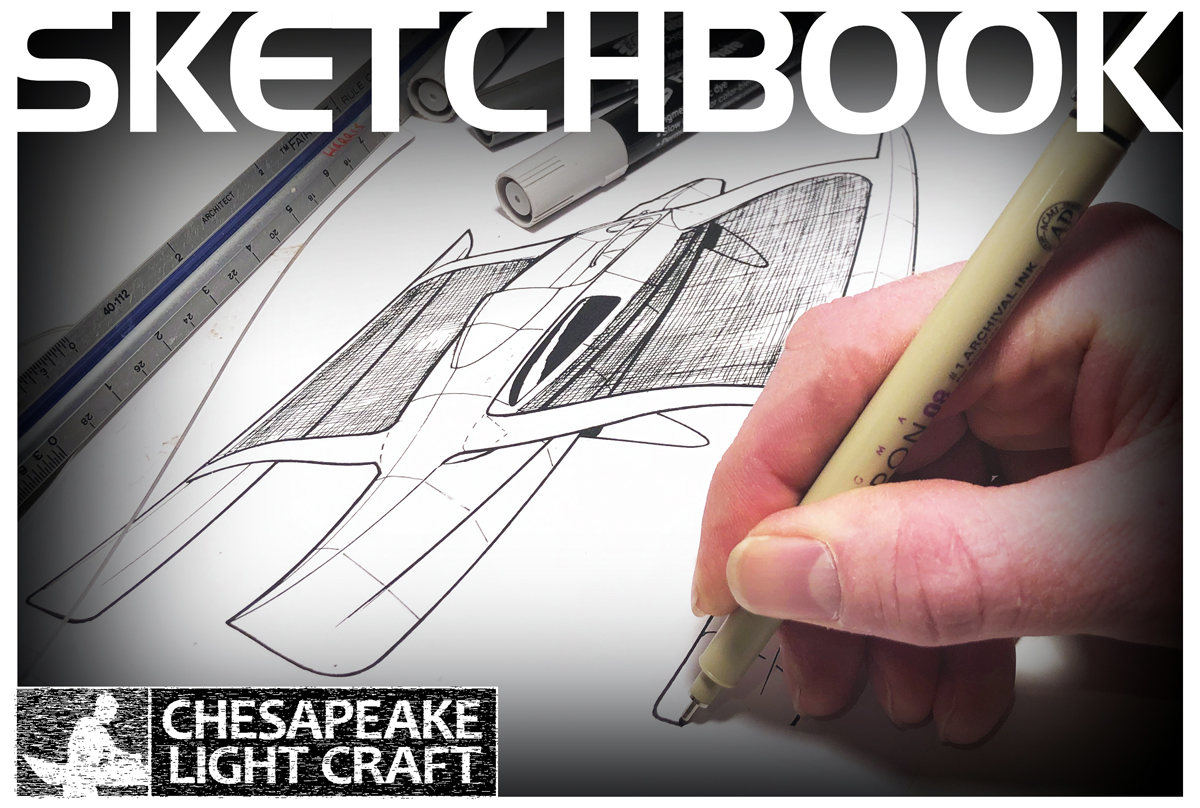Builders' Forum |
|
| ↓ Scroll to Last Comment ↓ | Forum Guidelines | Builders' Forum | |
Do you need to clean or cover the resin and hardener pumps between uses? If so, how?
Thanks!
8 replies:
RE: Epoxy pump between uses
How about general clean up tips?
- What do you do with brushes after gluing joints with "mustard"
- what do you do with mixing cups
- what do you do with unused mustard
- stirring sticks
- Drips on drop cloths
- How do you clean up scrapers
- Other issues?
I just joined my first two pieces on my Millcreek 13 kit and while I thought I had thought it all through... I'm new to composite work and would appreciate all "post glueing tips"
Devin
RE: Epoxy pump between uses
You are going to develop your own "system" and will have more mess and waste than you might desire, but as you get experience, your system will improve. First, short answers to your specific questions.
How about general clean up tips?
- What do you do with brushes after gluing joints with "mustard" - Toss them, they will be unusable when the epoxy hardens. Buy cheap "chip" brushes. Try to find a brand that doesn't shed too many bristles. You can gently pull the brush to remove some loose bristles prior to use. You can use sharp scissors to trim the brush to a nicer edge, or shorten it to get a stiffer overall effect if desired, prior to use. You will use a lot of brushes.
- what do you do with mixing cups - toss them when the epoxy hardens. Or you can turn them upside down over a waste bucket to let them drain and harden, then re-use them even though they have an epoxy coating inside.
- what do you do with unused mustard - toss it when it hardens (gets too stiff to use) - for more general comments below.
- stirring sticks - toss, or wipe well to minimize residue, then set aside across the top of a cup or something to let harden. When you let it harden, try to make sure it hardens as a smooth surface, then re-use. I've had stirring and filet sticks that I've used for entire boats, if they developed a rough finish I sanded them smooth and continued to use. They do get thicker and heavier as time goes by.
- Drips on drop cloths - try to minimize. If you are using good thick plastic, you simply bend it to pop off the bigger drips and sweep up the remnants. Do sweep up, or you'll find one of the hardened drips mixed in with epoxy, paint or varnish at the worst time in the most visible place on the boat. They don't really matter if it is just a protective drop cloth, just leave them be. Be carefull of drips on a work-surface plastic sheet, replace those sheets frequenlty. If you lay a piece of wood on it to sand or whatever the hardened drips can cause little divots to be impressed into the wood.
- How do you clean up scrapers - use a flexible plastic scraper - flex it when epoxy is hard and it will flake off. Again watch where the flakes go or you'll contaminate some batch of mix in the future - do it over the garbage can. Or, I also use some flexible metal putty spatulas (putty knife) where I can create a lot of pressure to scrape away excess filet material, etc.. Just wipe the blade well (including vinegar or alcohol, even better) before the epoxy hardens. The handle will get much "thicker" and uglier with left over epoxy coats as time goes by! The metal blade can be cleaned back to bright metal by flexing it and/or tapping it with a hammer, then a little sanding if necessary.
- Other issues? Pre-planning is the best way to reduce waste. Get a whole bunch of parts, seams, joints, areas, etc. all prepped and lined up, and even decide which things you'll tackle first, second, third, etc. prior to mixing any epoxy. This will even mean "looking ahead" in the build manual steps. I'll do things like get a rudder and some other parts all ready for epoxy coating and do those first with "clean" fresh tools, cups, brushes, rollers and epoxy for a few batches to finish coating one side of them, then move on to mixing up filet material and doing some filets using all the same cups and brushes, and always having that one big "fill" area ready to receive the last few globs of filet material that is getting stiff as I finish of a batch of mix. Try to always have something ready that needs gluing together or fileting or whatever that can use up the remainder of a cup if you mix too much for the task immediately at hand. Also, learn to mix the amount that you can use prior to it getting stiff - very temperature dependent, also depends on whether it is epoxy only, mustard, or filet material, the container, and how you work it. For instance, if coating parts, you can pour out a big cup full of mixed epoxy in thick lines all over all the parts you are about to roll, then go back and roll them. The epoxy being all spread out greatly increases the working time - but BOY OH BOY don't use this trick if you're not confident that you can roll everything prior to it getting stiff. You can use a similar trick when using a filet bag. Run all your filet lines in quickly, then go back and tool them. You get a lot of working time that way. You get very little working time if you slowly squirt out a few feet of filet line, then set the bag aside to tool the filet, then pick up the bag again, etc. The bad will harden up quickly. But again, waste in the bag is better than a hardened filet that you didn't get tooled and smoothed. Lots of words here - you'll ge the hang of it and better as you go.
When building in full swing, I probably fill a large garbage can per week with leftover rollers, gloves, brushes, cups, fiberglass remnants, sandpaper, mixing sticks, paper towels, rags, etc.. DO NOT start throwing things in the trash before they are hardened, that's a risk of cook-off and fire.
Re-reading, I'll add done last thing. I make supports by pouding 3 nails up through boards of different sizes to fit different parts. I can then coat both sides and edges all at once, being left with only 3 very minor liitle pin-spot blemishes where the nails supported the down-side of the piece. You have to be carefull not to tip the thing off the supports when rolling or brushing on the second side or doing the edges. Doesn't work for all parts in all situations, but can greatly speed up some processes.
good luck- Bubblehead
RE: Epoxy pump between uses
Can't help myself from adding something else. Try to find an out of the way corner where you can set up an epoxy mixing station. A waist-high (or higher!) table as small as 2ftx2ft (or a little bigger) will do. Put down several pre-cut plastic sheets on top - you'll move your stuff aside and roll up and dispose of one sticky sheet every day or 3. Lay it out with your epoxy containers/pumps, gloves, tools, cups, one tub of wood flower, one tub of celofill, paper towels, vinegar/alcohol, etc. all ready at-hand. Wipe off the bottom of the epoxy containers & anything else that is sticky each time you refresh this workstation. Position your trash can nearby. Speeds things up and keeps everything neat and orderly.
RE: Epoxy pump between uses
Thank you for the advice
I used it today in fact.
one thing I might add. I have a ton of old plastic cups given free from a local pizza place. They are getting a 2nd life to catch pump drips, use as mixing cups, hold vinegar for any quick wipes that may be needed...
also cutting plastic sheets long enough to use part to catch drips as I put mustard on joints while elevated by spacing sticks, then fold onto itself to give a cleaner plastic surface during the clamping phase. Will see how that works tomorrow when I unclamp.
RE: Epoxy pump between uses
Everything above's worth noting for how you work with two-part epoxy.
Working clean is applicable for pretty much anything that has a potential for making a mess.
A couple of observations I can contribute are –
Resin doesn't seem to gum up pump nozzles nearly as quickly as hardener. I've used the masking-tape method for short term nozzle covering both and it's effective.
Another tip is to leave the pump down once you're mixing your last batch for a session. You can lock them down with a half-twist, they return to the same state as when they were delivered new. This minimizes the amount of product that's left in the pump itself; when you start your next batch you'll draw fresh product up into the pump as you begin.
Nozzles still need a clean-up. Vinegar wipe's enough and eases adding the masking tape 'cap' particularly on the hardener's pump where build-up will happen otherwise. I find the wipe-and-cover easier with nozzle locked down too, otherwise there's a tendency to put downward pressure on the extended pump mechanism that can cause drippage... and allow time enough for the vingear to dry off (or use denatured alcohol for the wipe) before you apply tape.
RE: Epoxy pump between uses
I like the "leave the pump down" idea; going to try that. Here's a question as concerns the shorter red hardener pump. Mine has this tendency to draw only air the first pump or two, even tho the container is full enough to well cover the bottom of the straw tube. It's annoying because it messes up the 2:1 ratio. Any ideas on how to preven that? The blue resin pump never has this problem. Thanks
RE: Epoxy pump between uses
Pump it into a cup or something until it stops sputtering, pour the cup back into the jug.
Laszlo













RE: Epoxy pump between uses
» Submitted by hspira - Sun, 4/11/21 » 8:34 AM
if you mean between working sessions (e.g.. i am going to bed now and willl pick up this project later this week), i always wrap a little tab of blue tape over the end of the spigot when i end a session. this prevents drips and the little crud that develops on the spigot if left in the open air. i do also try to keep things clean and will wipe down the spigot with a little bit of a white-vinegar dampened paper towel if i have epoxy spilled on the spigots or containers. fwiwi, i always set my epoxy up on a little sheet of disposable plastic as spills will inevitable happen and i want to protect my work table form epoxy. while my sentence is long here...doing what i am describing is only about 2 inches of blue tape per spigot and 30 seconds. last point on this, depending where you live, is i will move my epoxy inside if the temps overnight have the possibility of dropping. again, i use a plastic-lined box to ensure the epoxy does not end up somewhere unexpected.
if between uses, you mean between projects and the epoxy is going away for a long time (e.g., months), i actually just follow the same regimen above. i consider the spiggots disposable and basically use them as long as they function. i don't recommend trying to remove and/or clean them. with the regimen above, i have gotten years between pumps and have even moved them to new epoxy containers....so i have a good inventory of spare pumps now :)
h